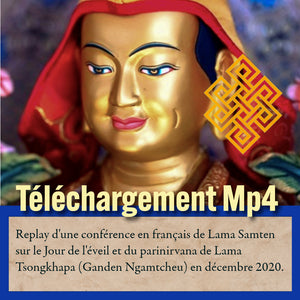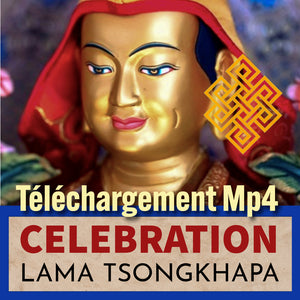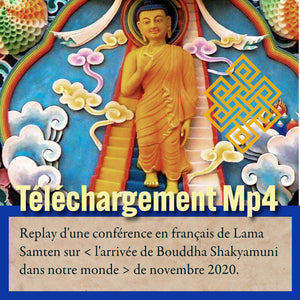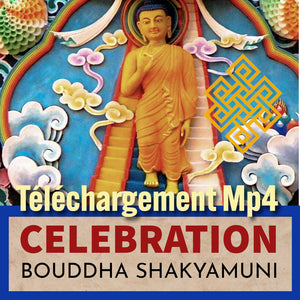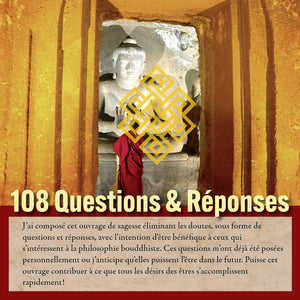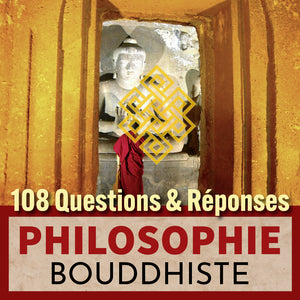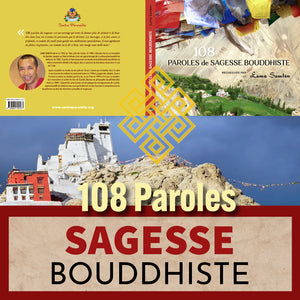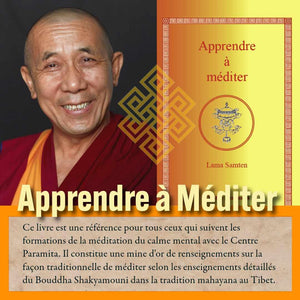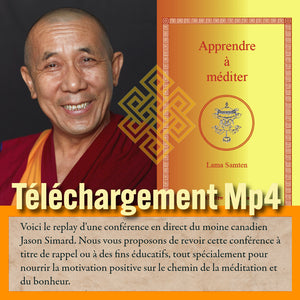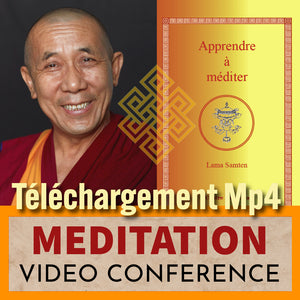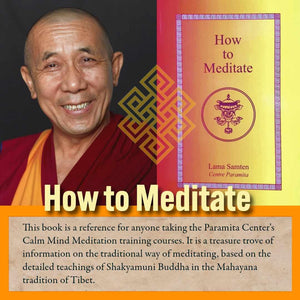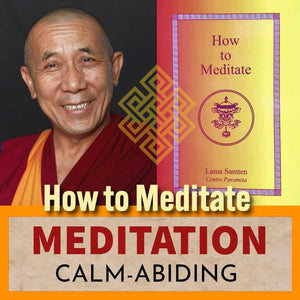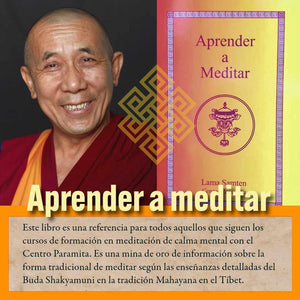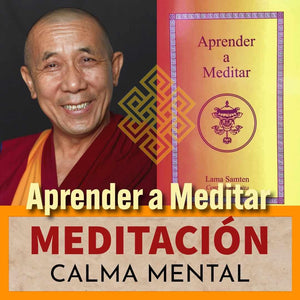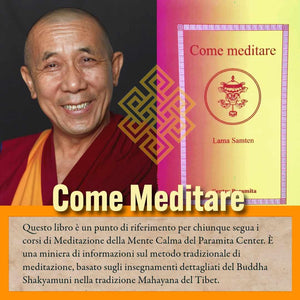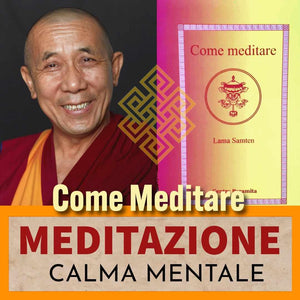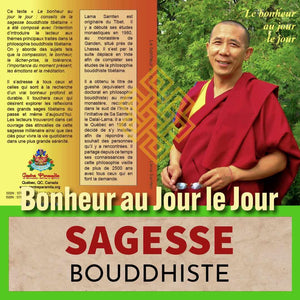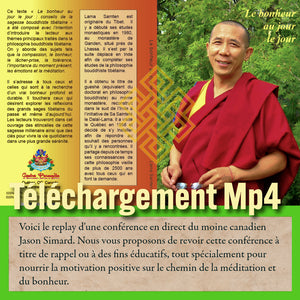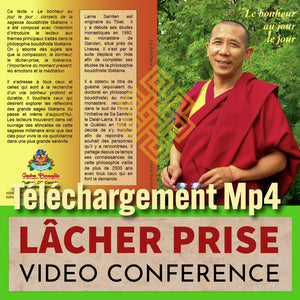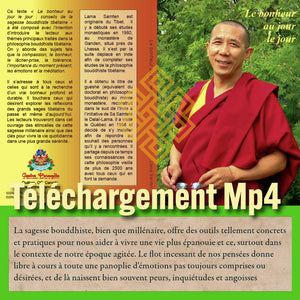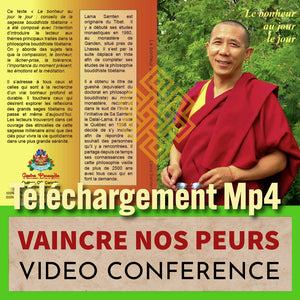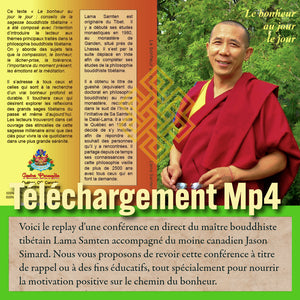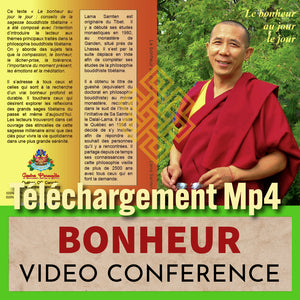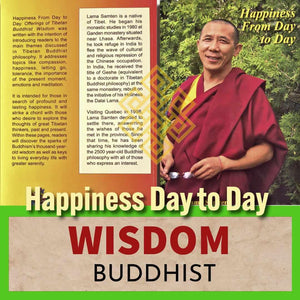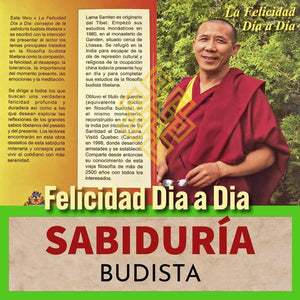Description
Book of 95 pages written by Tibetan Buddhist Master Lama Samten consisting in a brief presentation on how to develop samatha (sanskrit for calm-abiding of the spirit) and vipassana (sanskrit for attaining a special insight on reality) through meditation while acquiring abilities in eliminating the sources of mental afflictions. In respect with the Buddha Shakyamouni`s Teachings, this book can be useful by practitioners as a complementary manual to the verbal explanations and empowerments of the teacher.
Foreword
It is well known that the primary purpose of the Buddha’s teaching is to attain enlightenment by practicing two forms of meditation: concentration meditation and analytical meditation. The first aims at achieving calm-abiding (samatha), while the second aspires to gaining special insight (vipassana).
A mind that is pacified while abiding in single-pointed concentration is referred to as the state of calm-abiding. When such a state is attained, special insight becomes possible. This particular form of wisdom, when coupled with the bliss of meditative suppleness induced by the power of analysis, is capable of discerning every phenomenon.
In other words, calm-abiding is the temporary cessation of mental disruptions in the mind. By calming the mind, it becomes clearer. This allows the profound analysis of special insight to completely eliminate the very root of these mental disruptions.
This text is a brief presentation of the essence of calmabiding and special insight, as well as the manner in which to develop them. The instructions provided are in keeping with the teachings of Buddha Shakyamuni and of the great Indian and Tibetan Buddhist masters who have commented on them.
Tibetan Buddhist Philosophy
Our present world was born Buddhism about 2550 years ago. Indeed, it was at this moment that Shakyamuni Buddha, who had come to teach in the sacred land of India, appeared. In his immense goodness, he shared with the beings, in all impartiality, the teachings of the three baskets (vinaya, sutra and abhidharma). These instructions respectively allow the practice of the three higher practices of ethics, concentration and wisdom. By his many teachings, the Buddha was able to adapt to the needs, motivations and capacities of each of his disciples.
These teachings were passed on to Maitreya and Manjoushri, respectively to Asanga and Nagarjuna, who passed them on to the two learned lamas, Serlingpa (Suvarnadvipi-Dharmakirti of the Golden Islands) and Rikpékouyouk (Vidyakokila the Elder). These two lineages of teaching, named respectively of the vast practice and the deep sight, were afterwards united in the person of the Indian master Atisha Dipamkara. The latter transmitted them to Tibet splendidly during the last 17 years of his life, knowing how to adapt them to the Tibetan people in order to facilitate their understanding. He transmitted them to his main spiritual son Dromtonpa. These teachings were then kept intact by an unbroken lineage of masters such as the Dalai Lama to the pioneer Lama Tsongkhapa, founder of an excellent tradition presenting the instructions on mental calmness and penetrating vision still very much alive in our time.
It is usually said that all the Buddha's teachings are aimed at attaining enlightenment through the practice of two kinds of meditations: concentration meditation and analytical meditation. The first is aimed at achieving mental calm (samatha), while providing
Calm abiding is the state of mind which pacifies itself by remaining concentrated in a point internally. After having obtained it, it is possible to give birth to penetrating vision : a wisdom discerning each of the phenomena, combined with the bliss of the meditative flexibility induced by the power of analysis.
Calm abiding is therefore the temporary cessation of the delusions of the mind. By calming the mind, it becomes clear. This allows a deep analysis, by penetrating vision, which can definitively eliminate the very root of these disturbances.















































